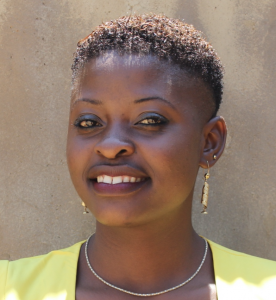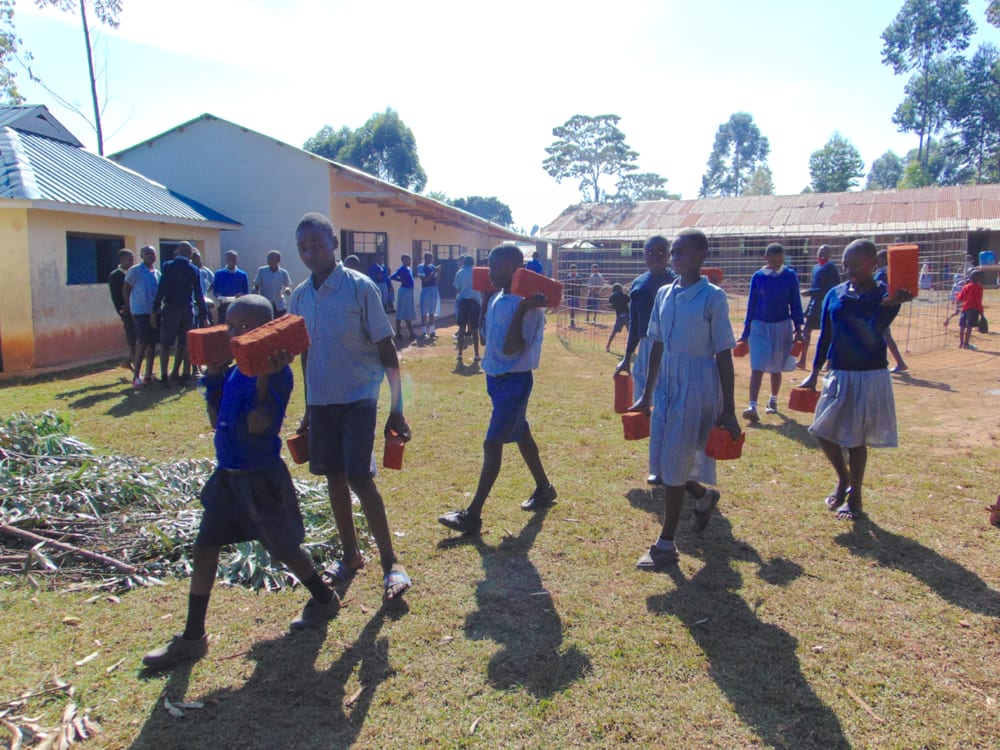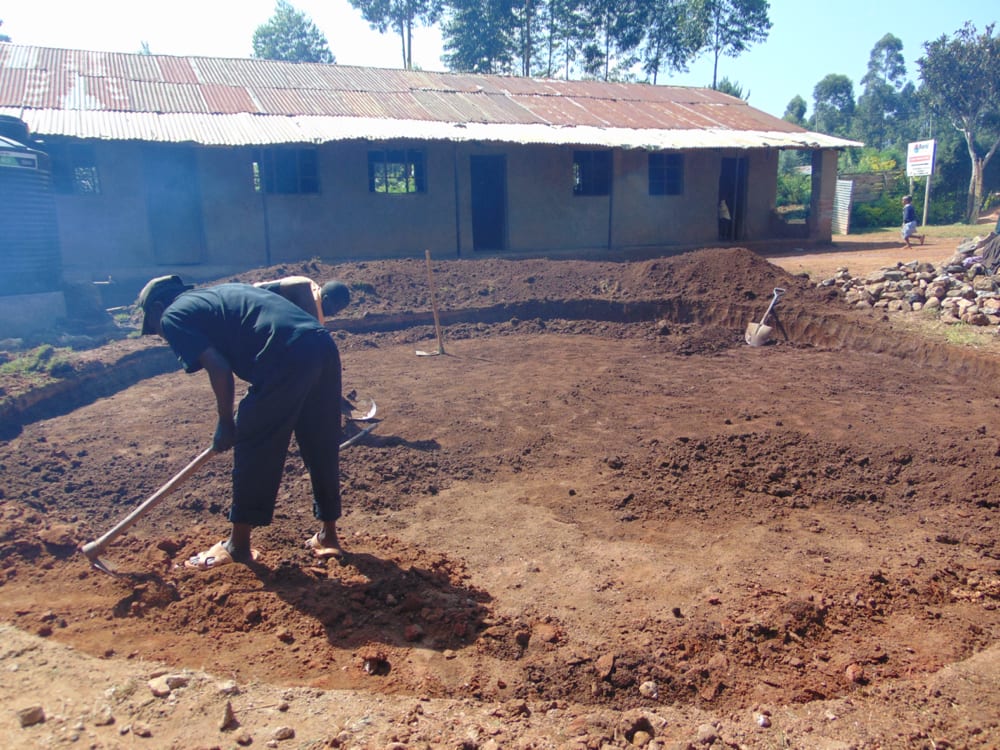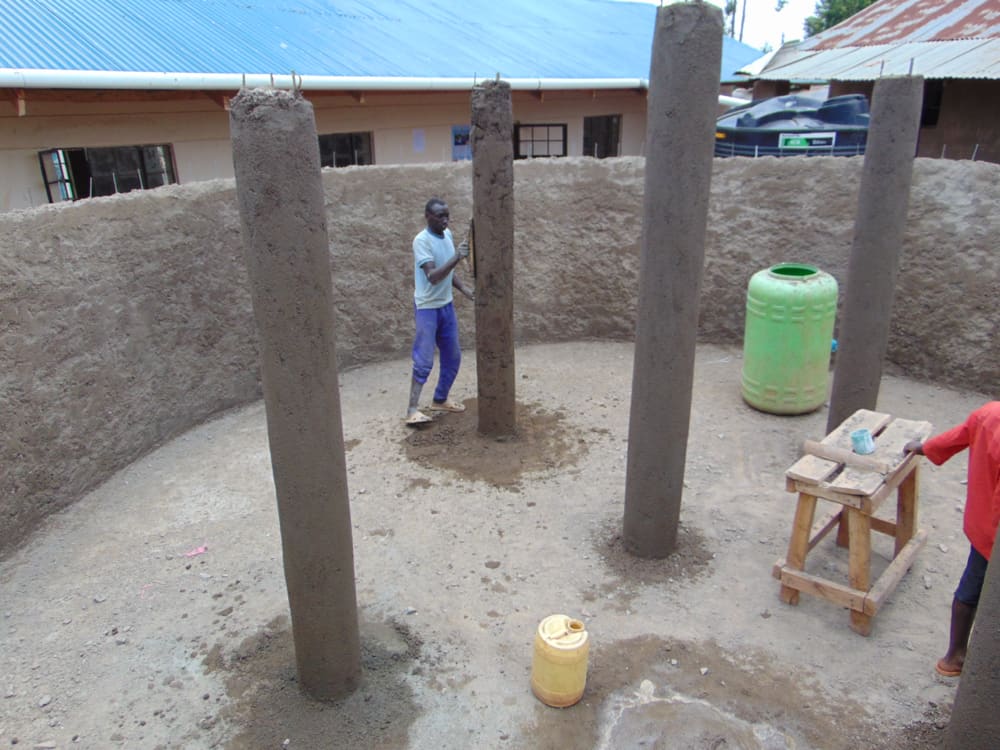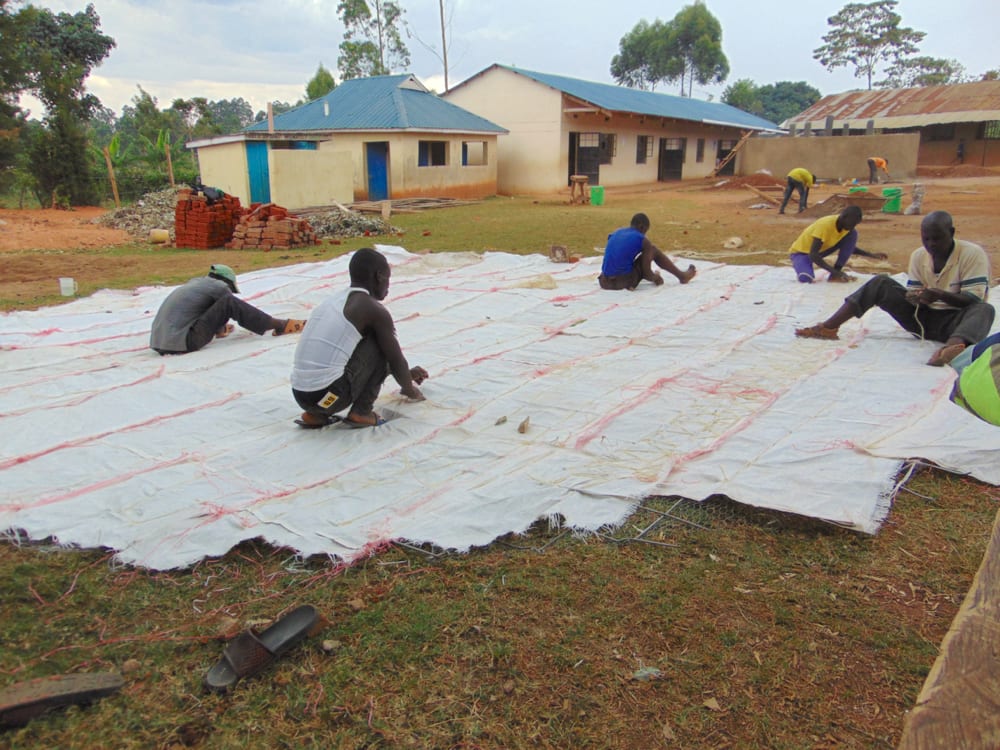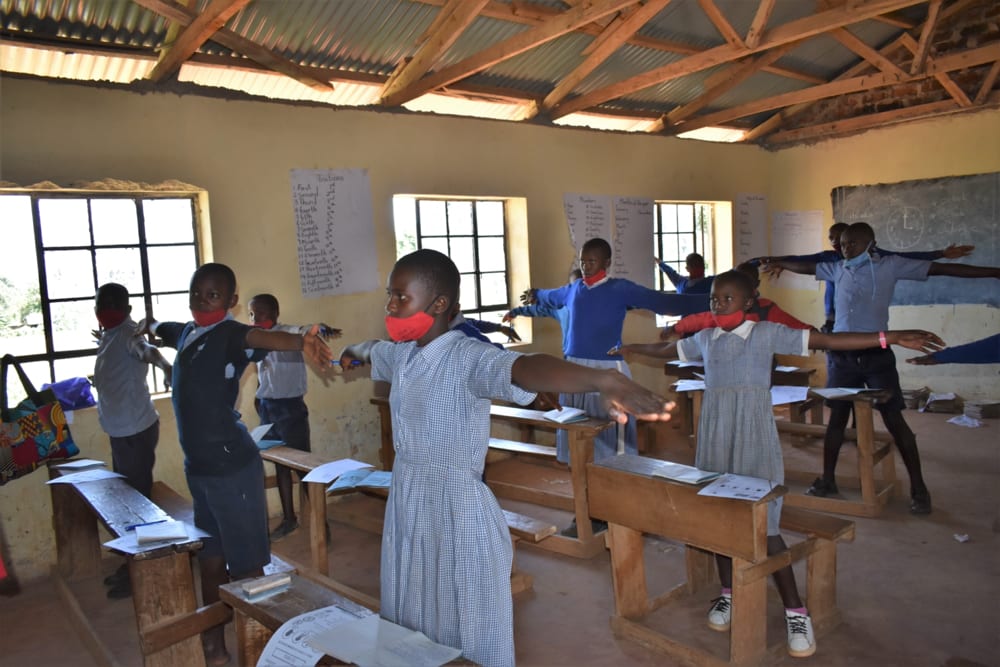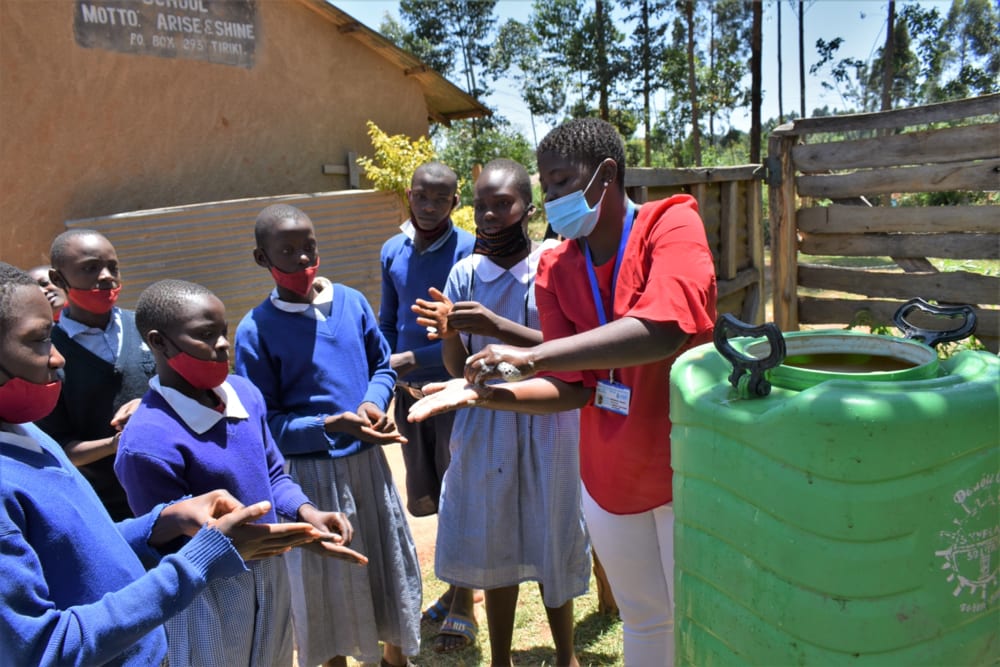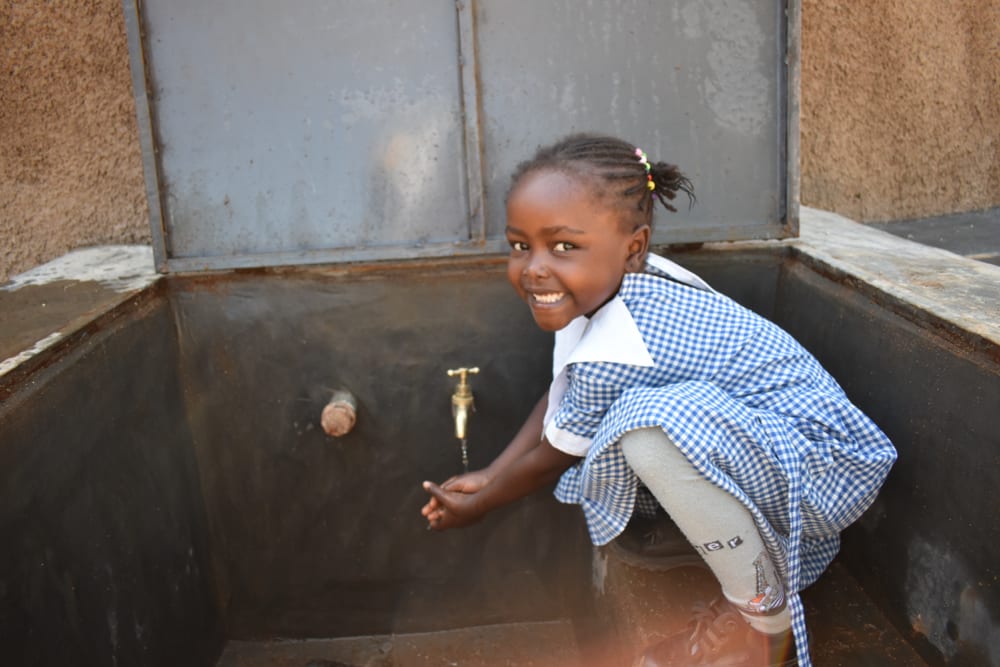There is no water at Saosi Primary School. In an attempt to make up for the severe water shortage here, the 320 students and 11 teachers and staff must carry water from their respective homes every day. This water is meant to sustain the entire school's drinking, cooking, and cleaning needs, but the amount students can provide severely falls short of their requirements.
School staff are not able to monitor the sources pupils choose to fetch water from at home, but even home water sources that might be clean can be contaminated by students' dirty containers. The quality of water from some students' homes is often poor anyway; we spotted full containers varying from cloudy to muddy water and almost all lacking lids. Due to a lack of a common water storage system at school, it would be difficult to treat each student's individual container; most, therefore, are not safe for consumption but are used anyway.
The walk to school with containers full of water is tiring and time-consuming. Inevitable spills mean not just wet clothing, but wet books that leave students unable to write for most of the day. When students are asked to head back home to fetch more water during the school day, precious learning time is wasted. And when students drink the dirty water at school, they often contract waterborne diseases such as typhoid that keep them home and further drag down their academic performance. Teachers and students alike are struggling to remain healthy and stay in school.
"I have been affected health-wise because, since I came to this school in January, I have been treating my own case of typhoid," said teacher Violet Asuka.
"It is since then that I decided not to use water within school unless I carry some from home. The days that I forget to carry water, it makes me go thirsty until I get back home because the school is in the interior [of the community] where we do not have shops for even buying water. It affects my finances too."
The pupils and teachers are experiencing low morale not just from having to carry their own water, but also from the disagreements that develop between parents and teachers connected to the water shortage.
"As the Head Teacher, it has affected my appraisal of work. The classes are interrupted so as to release the pupils to go look for water and this lowers their performance. My goals are not met and this affects my relationship with the parents because of poor performance," said Mr. Joseph Kiplimo.
Parents insist the teachers can do more to help their children complete their lessons, but they are already in school from 7:00 am until 5:00 pm. The interruptions from looking for water are simply too many, but the school cannot decrease its already minimal water rationing.
Sanitation and hygiene are wanting at Saosi Primary School as well due to the lack of water. The latrines are not in good shape. The teachers do not have toilets at all, for the ones they were using were condemned by the Ministry of Public Health. These latrines now sit full and unsturdy with wooden X's preventing one's entry. The pupils' latrines are not private, for the doors do not lock and the floor is damaged. There is currently nowhere for students to wash their hands after using the latrines or before eating lunch, let alone the water to do so.
What We Can Do:
Rain Tank
A 75,000-liter rainwater catchment tank will help alleviate the water crisis at this school. The school will help collect the needed construction materials such as sand, bricks, rocks, and water for mixing cement. We will complement their materials by providing an expert team of artisans, tools, hardware, and the guttering system. Once finished, this tank will begin catching rainfall that will be used by the school’s students and staff for drinking, handwashing, cooking, cleaning, and much more.
We and the school strongly believe that all of these components will work together to improve standards at this school, which will help lead to better student academic performance and will help to unlock the potential for these students to live better, healthier lives.
Handwashing Stations
The student health club will oversee the 2 new handwashing stations we will provide, and make sure they are kept clean and in working condition. The club leaders will fill the handwashing stations with water daily and make sure they are always supplied with a cleaning agent such as soap or ash.
VIP Latrines
2 triple-door latrine blocks will be constructed with local materials that the school will help gather. 3 doors will serve the girls while the other 3 will serve the boys. All of these new latrines will have cement floors that are designed to be easy to use and to clean. And with a rain tank right on school property, there should be enough water to keep them clean.
Training on Health, Hygiene, COVID-19, and More
We will hold a 1-day intensive training session with students, teachers, and parents. This training will cover a wide range of topics including COVID-19 symptoms, transmission routes, and prevention; personal and environmental hygiene; and the operation and maintenance of the rain tank, latrines, and handwashing stations. There will be a special emphasis on handwashing.
Our team of facilitators will use a variety of methods to train, including participatory hygiene and sanitation transformation, and asset-based community development. We will initiate a student health club, which will prepare students to lead other pupils into healthy habits at school and at home. We will also lead lectures, group discussions, and provide illustrative handouts to teach health topics and ways to promote good hygiene practices within the school including handwashing and water treatment. We will then conduct a series of follow-up trainings before transitioning to our regularly scheduled support visits throughout the year.

 Rainwater Catchment
Rainwater Catchment
 Rehabilitation Project
Rehabilitation Project












